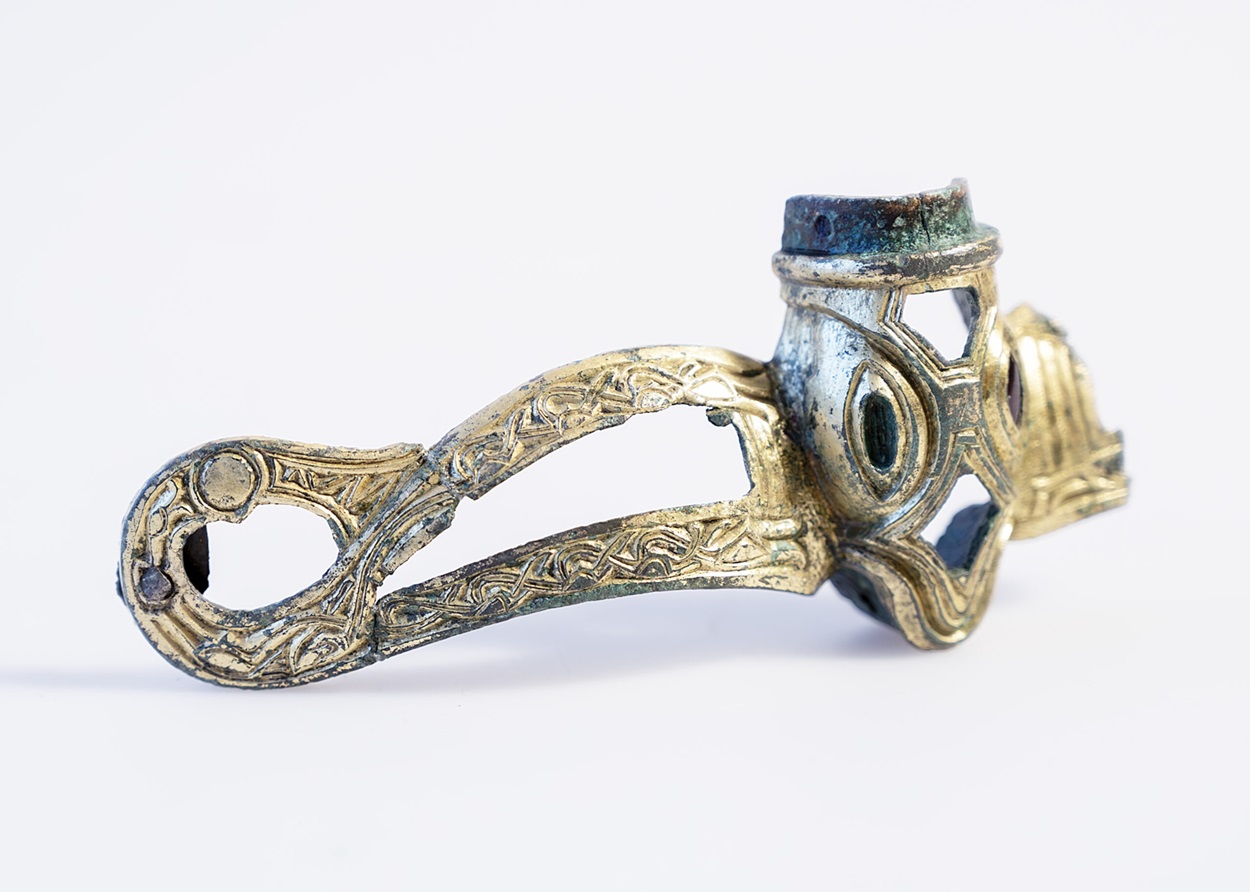An exceptionally rare fragment of a Pre-Viking helmet has been discovered in Lejre, Denmark.
According to archaeologists, the fragment dates from the end of the 7th century to the middle of the 8th century AD, just before the start of the Viking Age.
“In itself, finding helmet parts is a rare thing in Denmark. This piece comes from what must have been one of Scandinavia’s most magnificent helmets,” said ROMU’s archaeological director, Julie Nielsen.
The fragment consists of two pieces made from bronze, which are gilded in gold and set with red garnets, a gemstone associated with strength. Together, the two pieces form most of the helmet’s brow ridge, revealing its distinct curved shape.
Swedish archaeologist and senior researcher John Ljungkvist, who has examined the fragment closely, highlights its exceptional craftsmanship. Unlike other helmets, which were typically constructed from separate brackets, this helmet’s brow ridge was crafted as a single piece—an unprecedented design.
“The ornamentation – an animal with distinctive teeth and large eyes – reflects the style we know from the later Germanic Iron Age; the fragment is from the period between AD 650 and 750,” added Julie Nielsen.
The helmet underscores the grandeur associated with Lejre’s hall buildings and burial monuments from the same period. According to Nielsen, such a piece would have been worn by a king or a figure of the highest rank in Lejre’s hierarchical society.
Archaeologists believe that the helmet was likely used for ceremonial purposes, as Lejre was a region largely free from local conflict and served as a centre for the political and religious elite.
A press release issued by ROMU states that the fragment is on par with the craftsmanship behind the famous helmet from the Sutton Hoo shipwreck, where similar helmet fragments have been found in England and Sweden, indicating Lejre’s strategic position as a key trading hub.
Header Image Credit : Kristian Grøndahl /ROMU
Soureces: ROMU







